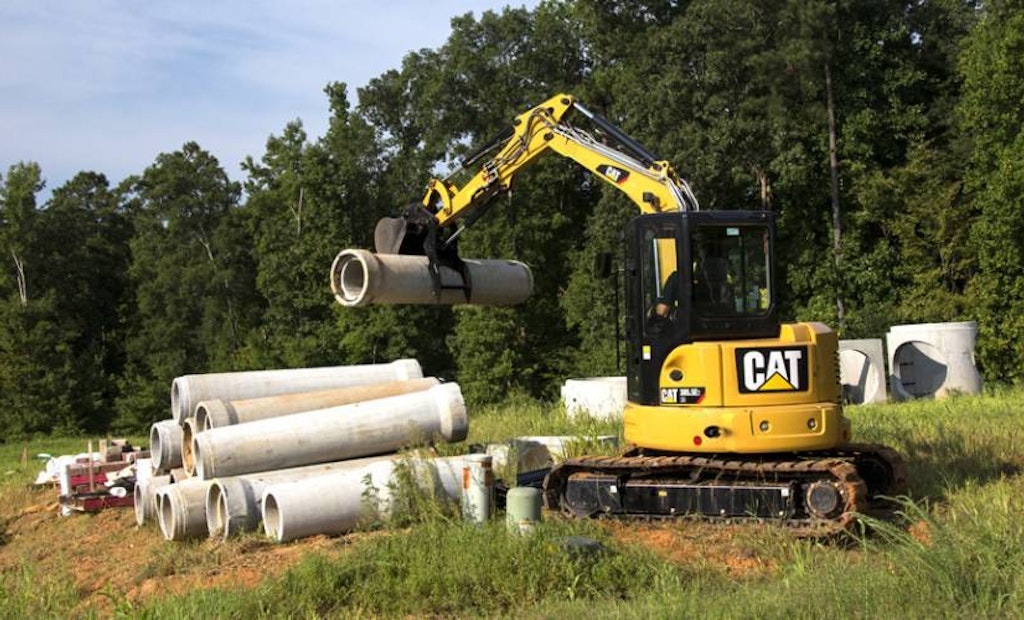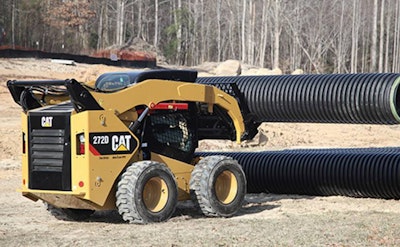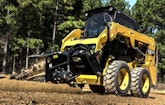
Interested in Relining/Rehab?
Get Relining/Rehab articles, news and videos right in your inbox! Sign up now.
Relining/Rehab + Get AlertsAny contractor looking for all-purpose pieces of equipment these days can look no further than an excavator and skid-steer. Excavators and skid-steers are designed to handle a multitude of attachments.
“There are so many options out there for these machines, they’ve become a real Swiss Army Knife,” says John Comrie, Volvo Construction Equipment compact excavator product manager. “Initially the excavator was built and it had just a bucket. All of a sudden someone realized you put a coupler on the front and you can put almost any attachment on it.”
Using both pieces of equipment will help a contractor with on-the-job duties without having to bring in more equipment. With all the options on the market, it certainly makes life easier for contractors.
“I would say the options are endless,” Comrie says. “These guys, especially in the oil and gas markets, are making up attachments on their own. Special attachments are available for carrying pipes, loading pipes, moving pipes. A guy can go out there with a mini-excavator and probably only need one machine because it’s so versatile now.”
Advantages for operators
There are advantages to using both excavators and skid-steers. With excavators, operators can turn 360 degrees, allowing them to sit in one spot with the machine and move the material from one area of a job site to another. Then a skid-steer can come in and move the material from there.
“It’s a good combination, and that combination has taken a lot of work away from the backhoe,” Comrie says. “Years ago, people would have a backhoe with a bucket on the back and a bucket on the front.”
There are several types of excavators available for contractors, from short-radius excavators for working in close quarters, to conventional-radius excavators for doing more heavy lifting. All the machines have an offset boom, allowing for work in the streets without impacting traffic. The boom can be offset to the left or right to keep the machine compact.
The most common attachment for excavators is the bucket. Comrie says it’s important to have different size buckets for different applications. “It’s best to be able to switch from narrow buckets, wider buckets, augers and grapple buckets to make the machine more of a tool.”
There are also smooth-edge and tooth buckets. Caterpillar now also offers buckets with dual-lock pin grabber couplers that were introduced last year and give contractors the ability to angle the bucket side to side.
“The neat thing about that is when the customer or operator wants to clean up underneath a pipe or wants to get under a ledge, he can turn the bucket 180 degrees and work in the opposite direction,” says Bob Shoop, Caterpillar product demo/instructor. “It makes the machine very versatile.”
Shoop adds that contractors in the utility installation industry like those for grading and leveling along with carrying unsafe sizes of material as well.
Other common attachments
Rippers, single-tooth and multi-tooth are common attachments. Using a ripper with a thumb is a nice tool that contractors can use for placement of rocks and pipes. Skid-steers and excavators can also be fitted with hammers, augers, compact wheels, line boring tools and stump splitters.
For finishing jobs, a backfill blade can be outfitted to the machines. “That just adds to the versatility of the compact excavator,” Comrie says. “If he’s backfilling a trench or wants to level or clean up, those are blades that are standard.”
Skid-steers have even more options, including material handling arms, wheel saws, trenchers, brooms, sweepers and vibratory rollers.
“I’ve been using a trencher on my skid-steer since I started this business three years ago,” says Robert Theis, who owns a small utility installation company in Baltimore. “It’s the easiest thing to use. I don’t want to own a lot of equipment and this allows me to have a skid-steer and then swap out the tools as I need them.”







